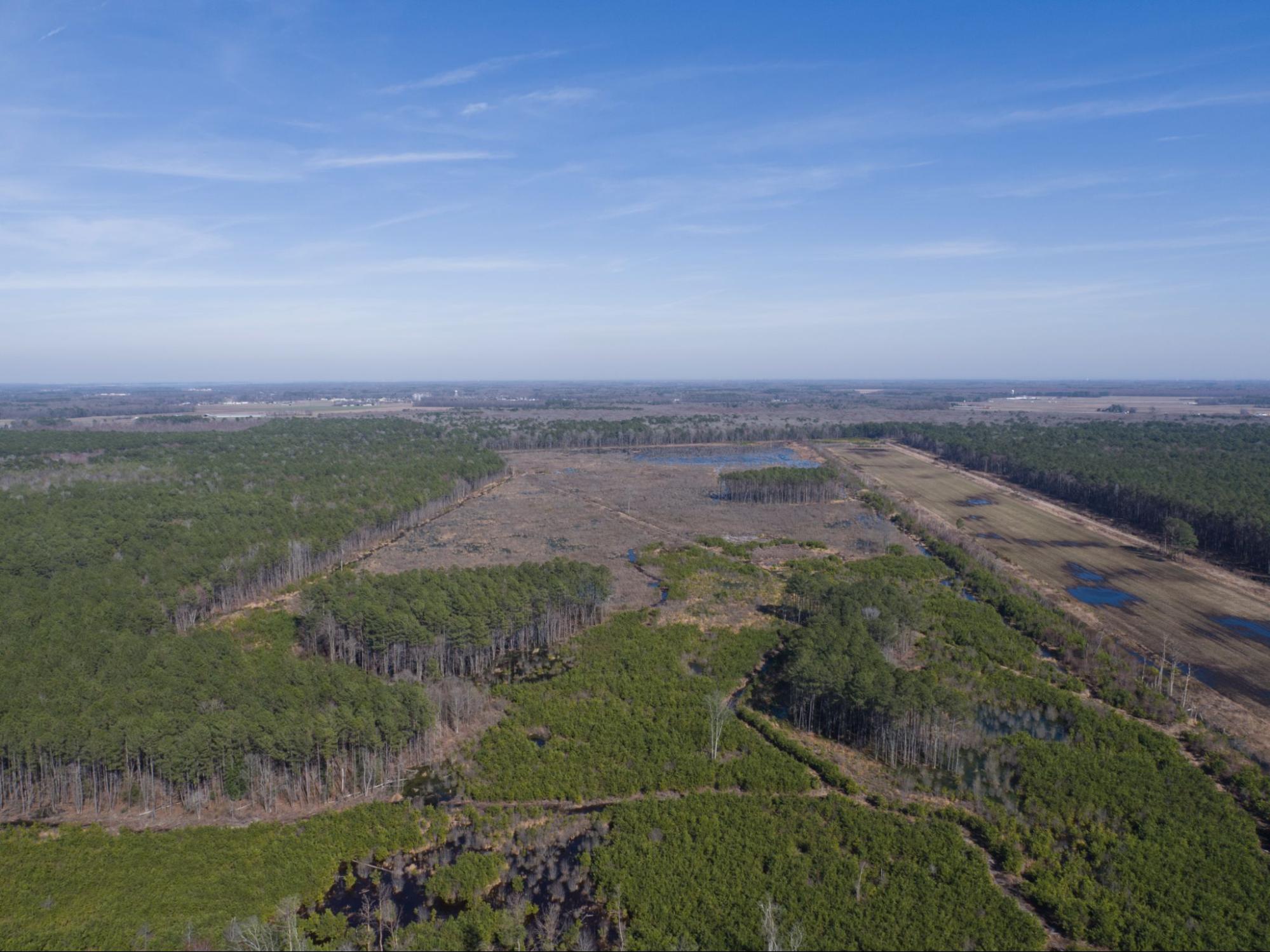Delaware Wild Lands has protected and restored a nearly 200-acre tract of land found in their much larger Great Cypress Swamp (GCS). Overall efforts in the swamp have protected 10,000 acres on the Delmarva Peninsula already, and current efforts have restored the land with plantings of bald cypress and Atlantic white cedar. In partnering with international organization Wild Earth Allies, their project will go on as an example of best practices in land management and conservation partnership. While the project did not consist of additional acquisition, its leveraging of unique partnerships and enhancement of land management makes it an important model for ongoing work done by the members of the Chesapeake Conservation Partnership. This makes for a true success story involving creative conservation to enhance our efforts on the path to conserving 30% of the watershed by 2030.
Wild Earth Allies (WEA) has worked internationally since 1981 to “more effectively drive improved conditions for wildlife, habitat and people in culturally appropriate ways.” The partnership between WEA and DWL leverages the strengths of both organizations. The “local to global” initiative of the project sets out to engage new audiences through WEA’s international reach and experience, and DWL’s large landholdings. The groups are working to enhance conservation delivery, expand their constituencies, and increase financial flows. Providing opportunities like these for international agencies looking to expand efforts to your state can improve upon the efforts of both partners.
This project consists of
- Botanic inventory of the Great Cypress Swamp
- Identification and collection of local seed stock of threatened tree species
- Accelerated restoration of forested wetland habitat
- Establishment of an adaptive restoration monitoring system
- Completion of an early-career environmental diversity fellowship
All of this served to enhance the ecosystem services of the DWL owned Great Cypress Swamp, as well as improve the effectiveness of their management, and the diversity and inclusion of their support team. Creative partnerships like these that can improve both the land and the strength of the teams that work to protect them in Delaware and beyond should be recreated throughout the watershed at the CCP wherever possible.

